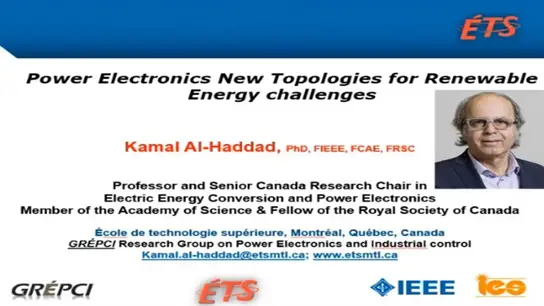Power Electronics Building Block (PEBB) Concepts
Task Force 2 of the Working Group i8
-
Members: FreePES
IEEE Members: $45.00
Non-members: $70.00Pages/Slides: 68
27 Aug 2004
1. INTRODUCTION TO POWER ELECTRONICS BUILDING BLOCK CONCEPTS
1.1 Definition
?Power Electronics Building Block (PEBB) is a broad concept that incorporates the progressive integration of power devices, gate drives, and other components into building blocks, with clearly defined functionality, that provides interface capabilities able to serve multiple applications. This building block approach results in reduced cost, losses, weight, size, and engineering effort for the application and maintenance of power electronics systems. Based on the functional specifications of PEBB and the performance requirements of the intended applications, the PEBB designer addresses the details of device stresses, stray inductances, switching speed, losses, thermal management, protection, measurements of required variables, control interfaces, and potential integration issues at all levels.?
Power Electronics Building Block (PEBB) is a generic concept (not a trade mark) incorporating several technological elements which are considered to be key to achieving major reductions in the cost, losses, size, and weight of power electronics applications. Although cost reduction itself is the most important benefit, losses, size and weight may also lead to additional cost savings. The scope of this document relates to the application of power electronics building blocks in the areas of Power Quality/Custom Power, FACTS, HVDC, Distributed Generation, and Storage applications, in the power range of hundreds of kW to thousands of MW. The primary emphasis of this work though is placed on applications in the one MW to hundreds of MW range. This document suggests various concepts and ideas useful to advance the development of this technology. Section 8 provides several examples of current applications and various manufacturers perspectives.
Unlike signal electronics applications, where a functional definition may provide sufficient description for a design, physics-based relationships are essential for the design of power electronics building blocks. The high energy levels present in power applications require that the effects of all of the natural conservation laws (conservation of energy, voltage, current, torque, force etc.) be considered and obeyed.
Primary Committee:
Substations Committee
Sponsor Committees:
Power Electronics Subcommittee


